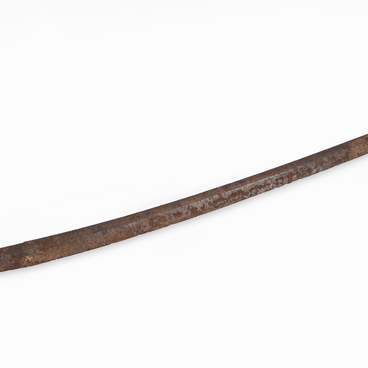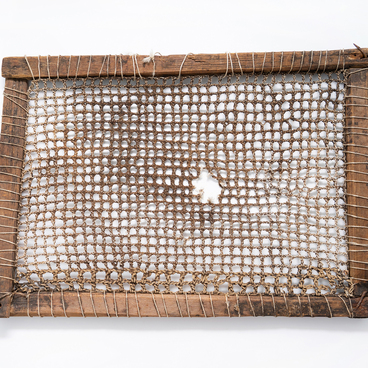The wooden beater for processing fish skin called “vexun” was made in the middle of the 20th century. It is made of two parts. The craftsman gave the handle a cylindrical shape, slightly expanding at the base. The working part received a trapezoidal shape. The parts were fastened with nails.
In the middle of the 19th century, the main material for sewing clothes of the Amur peoples who lived in the Amur River basin was the skin of fish and animals. The Nanai people used the skin of carp, muksun, amur, chum salmon, pink salmon, catfish, lenok, pike, hucho, as well as the skins of elk, Manchurian wapiti, roe deer, wild boar, and rarely dogs. The skin of the fish was usually removed in April or autumn after the cold weather, when there were no flies.
The treatment process included several stages. Fresh fish was dried for several hours before the crust appeared — as it was said, “when the mucus dries” and “so that the fish does not slip.” After that, the skin was cut: first around the head, then two longitudinal incisions were made from the head to the tail on the belly along the fins.
The skin was removed using a bone knife called “sogbo” from the angle of the near-gill incision diagonally in the direction of the tail. A strip 2,5–3 centimeters wide was left intact along the spine; it was ripped off from the head to the tail at the final stage. Knives for skinning fish carcasses were carved by Nanai men from the shin bone of an elk.
Each skin was dried separately on osier — willow — hangers in a straightened form, moreover the hangers were placed in ventilated places. The dried fish skins were stacked with scales to each other, rolled first on the long sides towards each other, then on the short sides in four layers, after which they were beaten in a special tool.
Up to 10 skins were
simultaneously laid in the central recess of the tool called “delin”, depending
on their size. After short striking with a beater called “vexun” more skins
were added. Upper Nanais, before processing the skin of fish in a softening
tool, sprinkled it with water so that it would not overheat and turn; Nanais
from the vicinity of the village of Troitskoye and Ozersk Nanais did not do
this, they believed that “the skin should warm up, become hot, so that it
softens better.”





